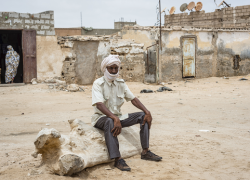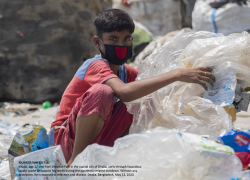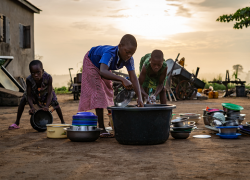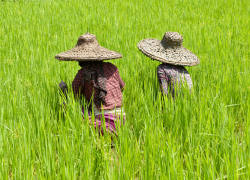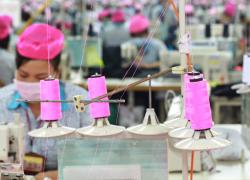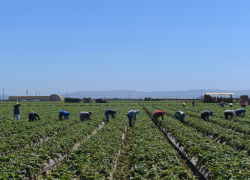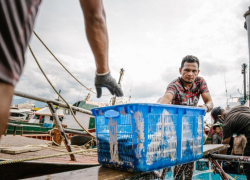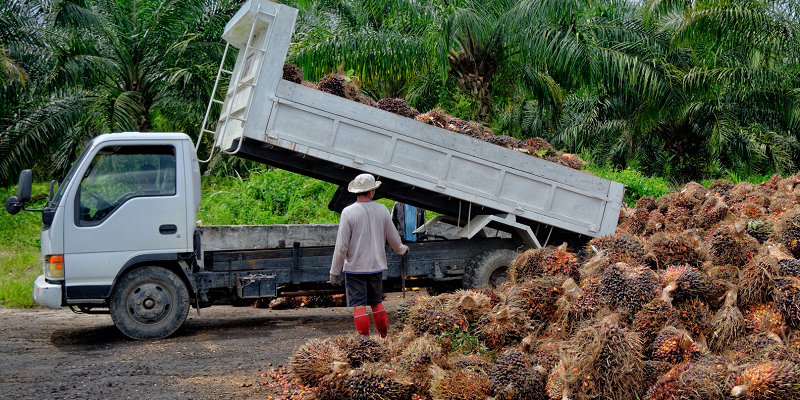
On a palm oil plantation in Indonesia, a migrant worker from one of the country’s smaller islands works long hours doing dangerous work for little pay. She is subject to constant harassment and violence on a remote plantation. She came to the plantation expecting economic opportunity, as promised by recruiters, but realized she’d been misled.
Across the Pacific Ocean in a garment factory in California, a man from Central America sews item after item, working long hours in grueling conditions. He earns a meager “piece rate” of three cents for every garment he completes, far below the minimum wage. He was told he would have a good job in America, but is now forced to pay back thousands of dollars in “recruitment fees” to his traffickers.
Both individuals are victims of human trafficking. Both hesitate to speak up for fear of retaliation, including deportation and physical violence to themselves or their families.
Centering survivors’ experiences
Under the updated U.S. National Action Plan to Combat Human Trafficking, the U.S. Department of Labor is recommitting its resources and energy to combat labor trafficking at home and abroad. The plan focuses on four pillars: prevention, protection, prosecution, and crosscutting approaches and institutional effectiveness.
We know that human trafficking, domestic and international, disproportionately impacts groups that have been marginalized, including racial and ethnic minorities, migrants, women and girls, and members of the LGBTQ+ community. We are putting the voices and experiences of survivors at the center of this updated plan. And we’re paying attention to the needs of vulnerable groups to make our efforts to combat human trafficking at home and abroad more equitable and effective.
Removing forced labor from global supply chains
Back in Indonesia, the palm oil produced by victims of forced labor will be used in hundreds of consumer products. From soaps to cosmetics to packaged foods, these products will be exported to dozens of countries, including the US.
Under U.S. trafficking law, goods produced with materials made by child or forced labor will now be included in our List of Goods Produced by Child Labor or Forced Labor. This list is a key resource for responsible procurement and enforcement.
We are also taking action to address trafficking at its source, supporting programs that elevate the voices of workers and survivors in an effort to root out labor abuse in global supply chains.
And we’re bringing businesses along with us. With new tools for social compliance and due diligence, we are helping companies track the labor and goods that feed into their supply chains so they are not complicit in filling the pockets of traffickers.
Rebuilding trust with communities at home
In the United States, trafficked migrant workers, like the garment worker in California, are often reluctant to come forward, fearing deportation. Under this updated action plan, the Department of Labor and other federal agencies are exploring ways to expand protections for trafficking victims who have employment-based nonimmigrant visas and those without legal immigration status.
We will also be ramping up our engagement with foreign governments to ensure that the recruitment of overseas workers for U.S. jobs is fair and free of exploitation from the start.
But when trafficking does occur in the United States, our investigators will be prepared to respond. As part of the plan, we will empower our investigators nationwide with increased training and greater engagement with local human trafficking task forces and partners on the ground who have longstanding relationships with communities at risk.
A trafficking-free future
We’re doing our part to secure a world without human trafficking. A world where palm oil workers in Indonesia, garment workers in the United States, and workers everywhere in every industry have fair wages, decent working conditions and a voice in the workplace. A world where no one is forced into labor out of necessity or lack of opportunities. A world where social and economic inequity is eliminated. The resources and initiatives from the National Action Plan to Combat Human Trafficking will be a key step toward eliminating trafficking.
Thea Lee is the deputy undersecretary for international labor affairs and Raj Nayak is the assistant secretary of labor for policy. Follow ILAB on Twitter at @ILAB_DOL.

 U.S. Department of Labor Blog
U.S. Department of Labor Blog
